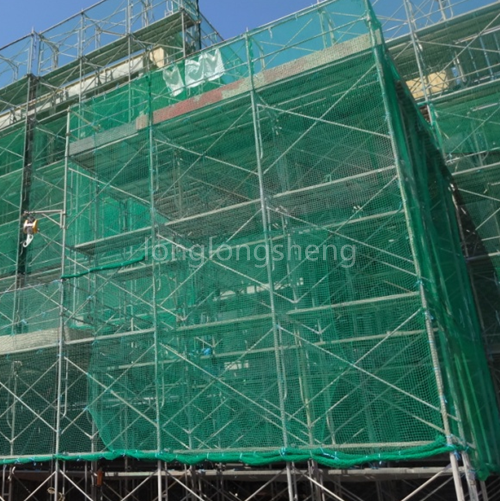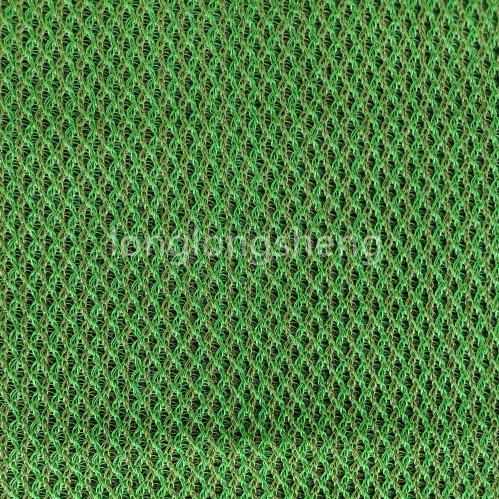Password set successfully, please use new password to log in
King Chou has long been concerned about the sustainability of ocean resources. The company helps purse-seine fishing vessel operators recycle used net... King Chou has long been concerned about the sustainability of ocean resources. The company helps purse-seine fishing vessel operators recycle used nets. (Taiwan Panorama photo) Fishing With Nets

According to figures from the United Nations Food and Agriculture Organization, around 1980 only 9% of the aquatic products consumed by humans came from aquaculture, but that figure rose to 20% in the 1990s and stood at 44% in 2010. It is estimated that by 2030, aquaculture will supply a majority of the world’s seafood. As the planet faces the exhaustion of ocean resources, net-cage aquaculture may take the place of marine fisheries. Taiwanese enterprises are looking to the future and seeking ways to protect the sustainability of ocean resources.
King Chou Marine Technology Company and Sun Rise E&T Corporation, both located in Pingtung County, are old friends. Both are members of the fisheries net and equipment industry, but each has its own area of specialization, and each has carved out a significant place for itself in the international market. The sea is their sphere of action, and they have developed highly competitive products for this harshest of environments.
After taking the Taiwan High Speed Rail to Kaohsiung’s Zuoying Station, we travel by car for a further 40 minutes to reach the King Chou factory in Pingtung’s Xinyuan Township. King Chou got its start manufacturing fishing nets here, but today its production bases include additional locations in Kunshan, China, as well as in Vietnam and Indonesia, and its diverse products are exported to more than 80 countries.
Sun Rise is located just a few kilometers away, in the Pingtung Export Processing Zone. On display in the company’s entrance hall are injection-molded net-cage bracket segments made from high-density polyethelene (HDPE); this product is sold into 55 countries. In recent years Sun Rise has also expanded into developing floating solar power systems.
These two companies are located at the southern tip of Taiwan, but their owners have ambitiously set out to market their products around the globe. King Chou is the world’s second-largest manufacturer of fishing nets, and is the only fishing-net maker in Taiwan to be certified by the Norwegian certification body Noomas. Sun Rise has invested in the development of eco-friendly HDPE pipe, and produces net-cage systems for marine aquaculture. Today Sun Rise can make net-cage brackets—the floating structures from which net cages are suspended—70 meters in diameter, with a circumference of 220 meters. The company is currently the largest manufacturer in Asia specializing in net-cage aquaculture equipment, and ranks second in the world, behind only a Norwegian firm.
King Chou chairman Chen Chia-jen tells us that in 1978 his father and some friends pooled their capital to found King Chou Fish Net. In 2002 the company was renamed King Chou Marine Technology Company, and began selling its products under the brand name “King Net.” In its early days the firm produced mainly gillnets and small nylon nets, but in 1986 the United Nations banned gillnet fishing on the high seas, and Chen began thinking about how to transform the company. In 1990 they began technical cooperation with the US firm Casamar and started to produce large American-style purse seine nets. Chen says: “We knew that a net is a kind of tool, and one that has no substitute.” As tools, nets have a wide variety of applications not only in the fisheries industry but also on land, including safety nets for construction work, sports nets, military camouflage nets, and nets used in agriculture to support climbing plants. King Chou is involved in all these areas.
Sun Rise chairman Joshua Tung transformed his company from product distributor to manufacturer. He was introduced to HDPE by a friend and felt optimistic about the prospects for this material.
Tung founded Sun Rise E&T Corporation in 1995 and visited Australia, where he discovered that “there were many companies in the world making pipes, but few that made pipe fittings.” The manufacture of pipe fittings involves the development of molds, which poses a higher technological barrier to market entry. But Tung rolled up his sleeves and personally dedicated himself to R&D.
“Then I saw the use of offshore net cages overseas,” says Tung. “We had just started branching out into the global market, so in 1999 we decided to to develop this line of products and succeeded in doing so in 2000, which marked our entry into the net-cage sector.” Net-cage brackets are now one of the company’s main product lines.
Net-cage aquaculture is on trend to take the place of fishing in the open seas in the future. In 2003 King Chou began working with a Norwegian net cage manufacturer and acquired its production technology through technology transfer. It then went on to gain certification from the Norwegian certification body Noomas, which specializes in fish farming equipment. King Chou thus became a qualified manufacturer for net-cage aquaculture systems.
Norwegian certification was an important milestone because in Norway net-cage aquaculture is a large industry with economies of scale and high capital investment. When aquaculture operators take out insurance, insurance companies impose rigorous standards for the net-cage systems they use, for without such standards it would be difficult to determine who was responsible for financial losses. “If you want to sell into Norway you need to get certification there, and we are the only firm in Taiwan that has it,” explains Chen Chia-jen. Because of Norway’s position as a global leader in aquaculture, Norwegian certification is like a ticket to the world market. “Today, net cages already account for 15% of our total revenues,” says Chen.
Chen describes how his company has recently been working with a Norwegian firm on a special design for net cages. Imagine a net cage 200 meters in circumference and 20 to 30 meters deep, which can hold tens of thousands of fish. It is impossible for operators to monitor every fish individually, so they install surveillance systems that use facial recognition and biometrics to identify individual fish, and scan their skin for any abnormalities that indicate ill health. King Chou’s new design involves a net channel that directs fish to the surface, with a gate to enable diseased fish to be separated from the healthy fish. “These net cages are huge, which makes them difficult to manufacture. Nonetheless, we are very willing to work with customers to develop new designs,” says Chen.
Joshua Tung describes a crisis that Sun Rise faced back in 2004. At that time his products were being copied by companies in China, and he had no new orders coming in for a whole year. Fortunately, the high quality of his products meant that the following year they won back the orders that had gone to China. “The biggest strength of our company and the Norwegians is our expertise in systems design.” What he means by a system is that net-cage aquaculture equipment must remain firmly anchored in place, so there is no room for mistakes in any detail of their installation. The cages must at all times be able to withstand ocean currents and storm waves of unpredictable strength without suffering any damage. “Each area of the ocean is different—for example, in the Taiwan Strait alone, sea conditions are different at every point from north to south—so you have to have a vast amount of experience with the sea.”
Tung recalls an occasion when his company was designing net cages for a Danish firm, and he had to go to sea in bad weather at temperatures below −20°C to see for himself the worst possible weather conditions, so that he could propose solutions. Recently he received inquiries about a project in Tasmania, and sent his son to stay there for a month to understand local conditions. Tasmania experiences small cyclones and there is around one day each year when the ocean currents reach a speed of eight knots. “We have to prepare for that day, or the net cage will fail,” says Tung, adding with pride, “In Norway our products have encountered cyclones with windspeeds up to 53.1 meters per second and wave heights of 7.3 meters, while in Miyako Island in Japan there are typhoons every year, but our nets have never suffered any damage in either location.”
Issues associated with inshore net-cage aquaculture, Tung explains, have been widely discussed in Europe, where environmental groups have complained about eutrophication of water caused by aquaculture feed in bays. This has prompted operators to position their net cages further offshore, at locations with a sea depth of 60–90 meters. When a Danish firm sought out Sun Rise for a project, “the speed of the ocean current at the offshore location was above 1.5 knots, which meant it would carry away the feed, so that it would not create pollution. But we also had to consider other factors, such as the greater wave height and the impact of the rapid currents on the net cages.” To date, the broadest net cages that Sun Rise has built have a bracket diameter of 70 meters and a circumference of about 220 meters, making them the second largest in the world behind only a net cage of Norwegian manufacture that is 100 meters across and 310 meters around.
Sustainability is a topic that is high on the agenda for both King Chou and Sun Rise.
In 2022, King Chou and Formosa Chemicals & Fibre Corporation (FCFC) together launched a “total recycling” program for nylon nets. FCFC has specialized recycling technology that uses processes including melting, dispersion polymerization, and refining to depolymerize nylon and recover its caprolactam, which is then repolymerized and pelletized, drawn into filaments, spun into yarn, and woven into fabric to make high-quality environmentally friendly fashionable functional apparel. This kind of circular economy model not only reduces the use of petrochemical raw materials, it allows precious resources to be processed with industrial technology and reborn as high-value products.
Since the company’s inception, Sun Rise has been optimistic about the environmentally friendly characteristics of HDPE. In 2010, following Typhoon Morakot, the then Pingtung County magistrate Tsao Chi-hung launched a program to install solar power generation facilities on land that was no longer suitable for farming or aquaculture, and he sought out Joshua Tung for technical support. Tung spent a week designing an injection-molded floating bracket module to be used as the base for photovoltaic panels. This marked the beginning of Sun Rise’s development of its floating solar system, which has already gone into operation in Japan, Thailand, Laos, and Taiwan. Sun Rise is one of only two companies in the world to develop floating solar systems, and its product is the only one that can continually adjust the orientation of the solar panels according to the angle of incoming sunlight.
As Tung shares his company’s achievements in various countries, and mentions the European Union’s program to promote offshore solar systems, he is at the same time revealing a potential major shift in the global energy network. Taiwan is by no means absent from this endeavor, so let’s keep our eyes peeled for what comes next.
This photo shows a large American-style purse seine being manufactured. While the mesh can be woven by machine, later assembly relies on human labor. These nets are so large that they have to be moved by crane. (Taiwan Panorama photo)
Chen Chia-ren realized that nets are indispensable tools with a wide variety of uses, which is why he has dedicated himself to their development and manufacture. (Taiwan Panorama photo)
Joshua Tung has dedicated himself to developing offshore net-cage systems made from environmentally friendly HDPE. Success depends not only on expertise in system design, but also on understanding sea conditions at the location where the net cage will be deployed. (Taiwan Panorama photo)

Hdpe Seine Fishing Net Taiwan News © 2024 All Rights Reserved.